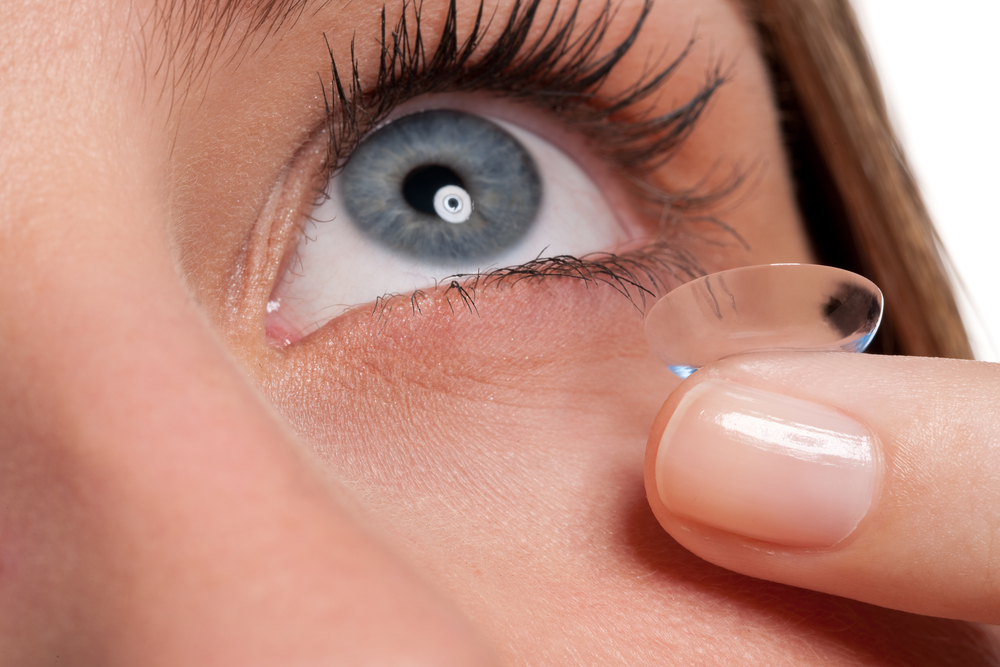The convenience of disposable contact lenses has made them a popular choice for millions of people worldwide. These lenses provide a quick, hassle-free solution for vision correction without the need for long-term maintenance. However, as their use continues to rise, concerns about their environmental impact have become increasingly prominent. While disposable eye lenses offer unparalleled convenience for the wearer, they also present significant challenges for sustainability and environmental health.
Give your costume an edge with Halloween Contact Lenses that instantly turn your eyes from ordinary to eerie. Choose from ghost-white, zombie-yellow, or blood-red styles. They’re a quick and easy way to take any costume to terrifying new levels during spooky season.
In this article, we explore the various environmental effects associated with the production, use, and disposal of disposable eye lenses, as well as some potential solutions to mitigate these impacts.
The Environmental Footprint of Manufacturing
The production of disposable contact lenses involves several stages, each of which contributes to their environmental footprint. From the extraction of raw materials to the manufacturing process, these lenses require significant energy, water, and chemical resources. The primary material used in most disposable lenses is hydrogel or silicone hydrogel, which is derived from synthetic polymers. These materials are energy-intensive to produce and often rely on petrochemical-based processes.
Additionally, the production of lenses involves the use of plastic packaging, often in the form of individual blister packs. While these packs are designed to protect the lenses and maintain their sterility, they add to the waste burden. Given that billions of lenses are produced annually, the cumulative impact of this manufacturing process becomes quite significant. The carbon emissions associated with the production and transportation of disposable lenses contribute to global warming, further compounding their environmental impact.
The Short Lifespan of Disposable Lenses
One of the primary environmental concerns with disposable eye lenses is their short lifespan. Most lenses are designed to be worn for a single day or up to a month before being discarded. As such, they contribute to a continuous cycle of waste. According to estimates, around 20 billion contact lenses are disposed of annually worldwide, with the vast majority of them ending up in landfills or water sources.
The issue with disposable lenses lies not only in their quantity but also in their composition. While some lenses are made from biodegradable materials, the vast majority are not. This means that, after being discarded, they can remain in landfills for hundreds or even thousands of years, leaching harmful chemicals into the soil and water. Additionally, since lenses are so small, they can easily escape waste management systems and end up in oceans, where they contribute to microplastic pollution.
The Impact on Marine Life
As contact lenses make their way into water systems, they pose a unique environmental threat. Lenses are often too small to be effectively filtered out by sewage treatment plants, meaning they can end up in rivers, lakes, and oceans. Once in the water, they can be ingested by marine life, leading to potential harm. Fish, birds, and other wildlife may mistake the lenses for food, and ingestion of plastic materials can lead to injuries or even death.
In fact, research has shown that contact lenses are among the many microplastics found in aquatic environments, with a particularly high concentration near populated areas. These lenses can persist in the environment for a long time, breaking down into smaller particles that continue to pollute and harm ecosystems. As plastic pollution in oceans becomes a growing issue, the contribution of disposable lenses to this problem cannot be overlooked.
The Recycling Dilemma
Recycling disposable contact lenses presents another significant challenge. While many types of plastic and packaging can be recycled, the materials used in contact lenses are often not accepted by standard recycling programs. This is due to the small size of the lenses and the complexity of their composition, which makes them difficult to process with conventional recycling methods.
Even when lenses are collected for recycling, the process of breaking down the plastic and separating it from other contaminants can be costly and inefficient. Additionally, the thin, flexible nature of contact lenses makes them prone to being lost during the recycling process, further diminishing the effectiveness of current systems. Consequently, most contact lenses end up in landfills, contributing to long-term environmental degradation.
Alternatives and Solutions
While the environmental impact of disposable contact lenses is undeniable, there are several strategies and alternatives that can help reduce their harmful effects on the planet.
- Switching to Reusable Lenses: One of the most effective ways to mitigate the environmental impact of contact lenses is by choosing reusable options. Extended-wear lenses, such as those designed for two-week or monthly use, require less frequent disposal and can be worn for longer periods. These lenses are also typically made from more durable materials, meaning they can withstand repeated use and reduce the overall waste generated.
- Recycling Programs: Some companies and organizations are now offering specialized recycling programs for contact lenses and their packaging. These programs work by collecting used lenses and sending them to facilities where they can be properly recycled. While still in their infancy, such programs offer a glimmer of hope for those looking to reduce their ecological footprint while still using disposable lenses. It’s essential for consumers to actively seek out and participate in these programs to help close the recycling loop.
- Eco-friendly Lenses: As awareness of the environmental impact of disposable lenses grows, some manufacturers have begun to develop more sustainable alternatives. These include lenses made from biodegradable materials or those designed with reduced plastic content. While these eco-friendly lenses may still be in the early stages of development, they offer a promising solution for consumers who want to make a more environmentally responsible choice.
- Educating Consumers: One of the most important steps in addressing the environmental impact of disposable eye lenses is raising awareness among consumers. Educating people about the environmental consequences of their choices can lead to more sustainable habits, such as reducing waste and exploring alternative lens options. By encouraging responsible disposal and recycling practices, individuals can contribute to a more sustainable future for eye care.
Conclusion
The environmental impact of disposable eye lenses is a growing concern that requires immediate attention. As their use continues to increase, it is essential to consider the long-term effects of their disposal and the resources involved in their production. While significant challenges remain, there are steps that both manufacturers and consumers can take to reduce the environmental footprint of contact lenses. By opting for more sustainable alternatives, supporting recycling programs, and fostering greater awareness of the issue, we can work together to ensure that our vision care choices do not come at the expense of the planet.















